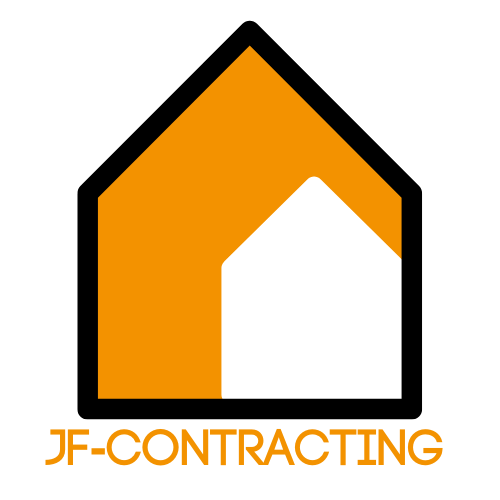In the fast-paced world of real estate, a killer listing presentation can make all the difference. Picture this: a dazzling array of visuals, compelling statistics, and a sprinkle of charm that leaves potential sellers thinking, “This agent is a genius!” It’s not just about showcasing properties; it’s about crafting a narrative that captivates and converts.
Table of Contents
ToggleOverview of Real Estate Listing Presentations
Real estate listing presentations play a crucial role in securing client relationships. These presentations serve as a platform for agents to showcase their expertise while highlighting properties effectively. Engaging visuals capture attention, helping potential sellers envision their property’s value.
Persuasive statistics enhance credibility, demonstrating market trends and comparisons that influence clients’ decision-making. Agents emphasize unique selling propositions, illustrating how their services stand out in a competitive landscape. Tailoring content to specific client needs fosters personal connections, making the presentation more impactful.
Visual elements, such as high-quality images and infographics, reinforce key points, transforming traditional pitches into informative experiences. Each segment of the presentation should flow logically, guiding clients through important information seamlessly.
Including client testimonials helps build trust and authenticity. Data-backed success stories exemplify the agent’s proven track record, making potential clients feel more confident in their decisions. Furthermore, the use of technology, such as virtual tours, enhances engagement.
Concisely summarizing the benefits of working together allows agents to leave a lasting impression. As agents craft these presentations, they focus on storytelling, creating a narrative around the property that resonates with clients. By showcasing market insights and employing a clear call to action, agents improve their chances of converting leads into clients.
Importance of Effective Presentations
Effective presentations play a vital role in real estate success. They establish strong connections with potential clients and create lasting impressions.
Building Trust with Clients
Trust forms the foundation of client-agent relationships. Agents who share authentic client testimonials enhance credibility. Including real success stories illustrates a proven track record. Personal connections strengthen these bonds, making clients more likely to choose a particular agent. Providing consistent follow-ups and open lines of communication fosters even greater trust. Presentations that incorporate warm, inviting visuals can significantly elevate this sense of security.
Showcasing Market Knowledge
Market expertise serves as a key differentiator. Agents who present insightful statistics demonstrate a deep understanding of current trends. Highlighting local market conditions illustrates awareness and preparedness. Providing comparisons with other properties positions the agent as an informed partner. Utilizing data to inform strategies reassures clients about pricing and selling timelines. Visual representations of data, such as graphs or charts, enhance engagement and retention, showcasing the agent’s professionalism.
Key Components of a Successful Presentation
An impactful real estate listing presentation includes critical elements that significantly enhance client engagement. Each component serves a specific purpose to ensure the agent effectively communicates their value.
Visual Elements
High-quality images attract attention and create an emotional connection with potential sellers. Infographics simplify complex data, making market trends easy to understand. Engaging visuals transform static presentations into dynamic experiences. Using virtual tours allows clients to explore properties remotely, further elevating their interest. Video elements can showcase the property in action, highlighting unique features and amenities. Consistent branding across all visual components reinforces professionalism and helps build trust.
Content Structure
A well-organized presentation guides potential clients through a logical flow. Start with a compelling introduction, capturing the essence of the property. Follow with targeted content that addresses the seller’s specific needs. Each section should build on the previous one, gradually leading to the proposal. Effective summaries highlight key points, making the information easily digestible. Conclude with a persuasive call to action, prompting clients to take the next steps. Clear headings and bullet points improve readability and allow for quick reference.
Strategies for Engaging Presentations
Creating an engaging listing presentation requires the use of effective strategies. Incorporating storytelling techniques and leveraging technology can significantly enhance the impact of presentations.
Storytelling Techniques
Agents should weave compelling narratives around properties. Building a connection involves sharing the history and unique features of each home. Through anecdotes, potential sellers can envision themselves living in the property. Highlighting local community stories adds emotional depth. Using relatable language makes the presentation feel personal and captivating. Agents can structure the presentation to include client testimonials that reflect positive experiences. Incorporation of these elements creates a memorable experience that resonates with sellers.
Utilizing Technology
Leveraging technology amplifies engagement in presentations. Virtual tours allow clients to explore properties from the comfort of their homes. High-quality videos showcasing properties bring spaces to life, creating a more immersive experience. Interactive visuals, such as infographics, simplify complex data while adding visual appeal. Utilizing presentation software with customizable templates enhances the overall aesthetic. Agents can also integrate live data to showcase market trends in real time. These technological advancements foster deeper connections and encourage better client interaction.
Common Mistakes to Avoid
Focusing too much on features rather than benefits can weaken a presentation. Sellers often want to understand how a property will improve their lives, not just its physical attributes. Skipping market data is another error; robust statistics provide context for pricing and local trends that influence seller decisions. Presenters need to integrate visuals that clarify this data and complement their narratives.
Neglecting to customize presentations for each client can lead to missed connections. Agents should strive to address specific needs, showing they understand each seller’s unique situation. Ignoring storytelling techniques may also detract from the overall impact. A narrative builds emotional engagement, helping potential clients relate personally to the property.
Overloading slides with text can overwhelm prospects. Clear visuals and succinct bullet points improve information retention and capture interest. Failing to rehearse the presentation can result in lack of confidence and potential miscommunication. Practicing ensures a smooth delivery and enhances professionalism.
Disregarding follow-up opportunities post-presentation is detrimental. Engaging after the meeting shows commitment and fosters trust, crucial for relationship development. Furthermore, not utilizing technology effectively limits interaction. Tools like virtual tours and interactive infographics significantly boost engagement, allowing clients to visualize the property.
Underestimating the power of testimonials can weaken credibility. Showcasing previous successes or satisfied clients builds trust and reassures potential sellers. Lastly, presenting without a clear call to action can leave clients uncertain about the next steps. A strong conclusion guides clients toward their decision-making process, reinforcing an agent’s role as a valuable partner.
An effective real estate listing presentation can be the key to unlocking new client relationships. By blending engaging visuals with compelling narratives and solid statistics, agents can create memorable experiences that resonate with potential sellers.
Focusing on storytelling and personal connections not only enhances credibility but also fosters trust. Utilizing technology and high-quality visuals further elevates the presentation’s impact.
Ultimately, a well-crafted presentation not only showcases properties but also positions agents as knowledgeable partners in the selling journey. Prioritizing the seller’s needs and providing a clear call to action ensures that agents stand out in a competitive market.








